#japanese pop culture
Text




Kanye West and Alexis Phifer for Harper’s Bazaar (2007)
#kanye west#yeezy#adidas#yeezy boost#old kanye#magazine#2000s web#2000s nostalgia#2000s#2000s fashion#awge#pop culture#streetwear#streetwear archive#2000s style#y2k fashion#y2k nostalgia#y2kcore#y2k#y2k moodboard#y2k aesthetic#asap rocky#playboi carti#opium#fashion#los angeles#y2k style#japanese pop culture#pop art#takashi murakami
14 notes
·
View notes
Text
Harajuku 🍢🍭 Takeshita Street






#Harajuku Station#Takeshita Street#Harajuku#Japanese Pop Culture#Fashion#Shopping#Shibuya#Tokyo#Japan
14 notes
·
View notes
Text

Japan
#Junjo ito#kuchisake onna#Kikuo#bnha#Sanrio#studio ghibli#horror manga#japan#japanese pop culture#Japanese art#anime#japanese urban legend#naruto#disturbing movies#higurashi#Japan meme#memes#two sides
88 notes
·
View notes
Text
Thinking About the “Othering” of Japanese Media
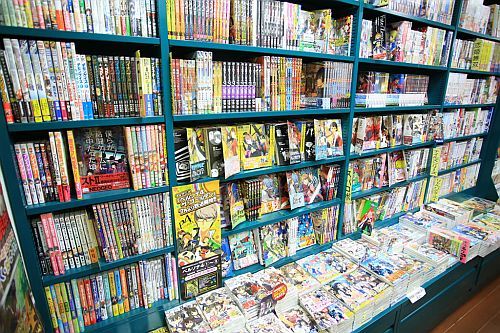
For those who keep up with Japanese video games, you may have heard comments from a prominent Japanese video game producer about how a certain term labeling a video game genre felt discriminatory in his own eyes. A recent Polygon article about that term made me think about how the Western media has “othered” Japanese pop culture media for as long as I remembered.
The producer I’m talking about is Final Fantasy XIV and XVI producer, Naoki Yoshida (known as Yoshi-P to his fans). Back in February 2023 in an interview, Yoshi-P said that the term “JRPG” (short for “Japanese RPG”) was considered discriminatory to him and his peers in the Japanese video game industry. Polygon took a look at how Japanese RPGs and JRPGs became a thing in the late ‘90s (starting with Final Fantasy VII’s North American release in 1997) and how media outlets in the West never seemed to take them too seriously. Even worse, the outlets shoved Japanese developers into a sub-category they never asked to be a part of once Japanese RPG popularity started to wane in the mid-2000s’.
After reading the article, I actually thought about manga and its perception when I first started reading comics. When I first discovered what manga was back in 1995, I learned about Ghost in the Shell from an issue of Wizard Magazine (a North American-based magazine highly dedicated to Western comics). The first thing that came to mind when I read what Wizard wrote was that it had a cybersex scene and very adult in nature. My mind was somewhat blown since I was in 7th grade at the time. Now that I think about it, almost 30 years later, I wonder if Wizard was trying to say that Japanese creators were super-perverted compared to Western creators. I still remember a non-fan a friend of mine met at Otakon one year who asked “Isn’t anime sexual?” when inquiring bout anime.
With regards to manga, for most of its history in the overall comics world, it has been othered in the U.S. due to how successful it’s been in reaching out to “non-traditional” comics-reading audiences. Statements like “Oh, it’s just a fad!” and “Manga doesn’t have dedicated buyers (i.e. adults with disposable income) like Western comics does!” were thrown to discredit manga’s popularity. Christopher Butcher (of Mangasplaining/TCAF fame) talked about this in a 2015 article on his website, which still holds some truth today. Even though manga sales have peaked around the pre-vaccine COVID time period, they are steady today. New York Comic-Con in 2022 had a substantial anime/manga presence compared to years past. Anime and manga can’t be ignored any longer.
Yet I know that some things haven’t changed in industry recognition. I will use the Eisner Awards as an example. For those who don’t know, it’s a prestigious awards ceremony that happens around San Diego Comic-Con every year and honors the best in comics. However, their recognition of manga is spotty. There has been recent criticism towards the Eisner committee for recognizing only the “hot” manga creators (i.e. the ones with best-selling manga titles on book charts). The best example I can give is Junji Ito. A lot of his works are nominated despite there being better works worthy of recognition out there. There has been some criticism in the manga circle I’m in about how Eisner judges/representatives don’t seem to take the time to explore the greater breadth of what manga has to offer in its new golden age.
Of course, when awards ceremonies like the Academy Awards don’t really seem to care much about praising Japanese pop culture media, what hope is there, right?
Which brings me to a point that the Polygon article elaborates on the West’s insistence on particular views of Japan.
“It’s clear that the mainstream only courts a specific idea of Japan as being acceptable — often reinterpretations of feudal Japan, largely spanning from the 1500s to late 1800s, when the samurai were still part of Japanese society.“
I do notice that Japan is supposed to be this “quirky” and “weird” place with wild imagination. If somehow a Japanese title has themes common in Western media/culture, but lacks the exotic style Westerners prefer, it’s sometimes heavily ignored in the mainstream eye. I don’t know. What do you guys think?
Polygon does mention that we’re living in some really good times with regards to Japanese video games being popular again. Many fans, including myself, know that too well. I enjoyed gaming again due to the variety of Japanese-developed titles that came out since 2016 (the start of the Japanese video game industry revival). I see parallels in manga and anime reception too. All of Japanese pop culture media is celebrated overseas. Fans that consume all things Japanese are living through amazing times.
That doesn’t mean that it’s going to last forever. I do know at some point, Western media will find new ways to scrutinize Japanese media and our time in the spotlight will fade again. Some degree of othering will always happen due to human nature and I know that we can use that term for positive purposes. Manga is about how “others” that are different from the norm can become celebrated by the world. Reading this post about manga reminds me that comics of any kind can cover any topic imaginable and definitely be made for “other” people to read.
25 notes
·
View notes
Text
Academic Books on JP Pop Culture and Beyond
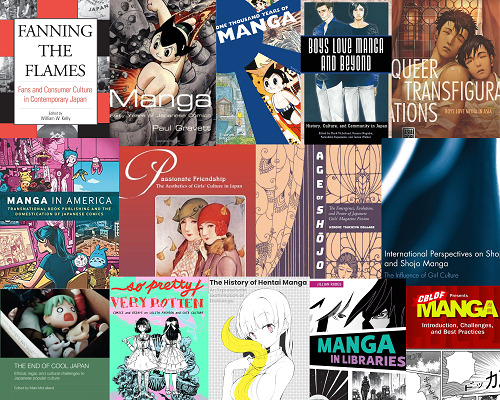
A list of nonfiction books I’ve enjoyed, largely around Japanese comics but also other literature, fandoms and even one book on a fashion I love.
Fanning the Flames: Fans and Consumer Culture in Contemporary Japan edited by William W. Kelly
Exploring different Japanese fandoms such as music, baseball or rakugo this older book from 2004 has one particular essay I still find memorable despite its age. Girls and Women Getting Out of Hand: The Pleasure and Politics of Japan's Amateur Comics Community by translator Rachel Thorn, which she has also put up on her blog.
Manga: 60 Years of Japanese Comics by Paul Gravett
An overview of the history of modern Japanese comics this title was notably banned in libraries in a California county in 2006. All because it chose to not shy away from including a few pages on the genre of eromanga.
One Thousand Years of Manga Paperback by Brigitte Koyama-Richard
Originally published in French this broader look at the artistic development of Japanese sequential art has also been translated to English by Daniel Radzinowicz, and there’s a newer 2022 edition.
Boys Love Manga and Beyond: History, Culture, and Community in Japan edited by Mark McLelland, Kazumi Nagaike, Katsuhiko Suganuma, James Welker
With a wide-raging collection of essays this 2015 book, nominated for an Eisner Award for best Academic/Scholarly work, is still an informative title available in English on the phenomenon of boys love.
Queer Transfigurations: Boys Love Media in Asia edited by James Welker
Edited by a professor who was also a contributor in the previously mentioned Boys Love Manga and Beyond, this 2022 essay collection looks at the expansion of boys love media across Asia.
Manga in America: Transnational Book Publishing and the Domestication of Japanese Comics by Casey Brienza
If one hasn’t been curious already, any reader of Japanese comics in English could use a look at this 2016 book on the processes and people that brings their favourite material across borders.
Passionate Friendship: The Aesthetics of Girl’s Culture in Japan by Deborah M. Shamoon
While shoujo manga is not just romance comics, this is still a lovely book from 2012 that looks at the 20th century development of various girls’ literature in Japan.
Age of Shojo by Hiromi Tsuchiya Dollase
As well this 2019 book covers the creation of girls’ fiction in Japan, from the turn of the century over 80 years and the at times expression of transgressive ideas.
International Perspectives on Shojo and Shojo Manga: The Influence of Girl Culture edited by Masami Toku
Published in 2015 this not to be missed collection of essays, also with interviews of several Japanese comics artists (including as Takemiya Keiko and Hagio Moto) and their work in girls’ comics.
The End of Cool Japan: Ethical, Legal, and Cultural Challenges to Japanese Popular Culture edited by Mark McLelland
Academics from four continents of the Anglophone world, excepting an inclusion from China, begins to reveal just how convoluted and varied the legal, ethical and cultural questions around Japanese comics and animation are both within and outside Japan’s borders in this 2016 collection of writings.
So Pretty / Very Rotten: Comics and Essays on Lolita Fashion and Cute Culture by Jane Mai and An Nguyen
This 2017 book on Lolita fashion is what I recommend on this sometimes misunderstood subculture still found in street fashion to depictions in media.
The History of Hentai Manga: An Expressionist Examination of EroManga by Kimi Rito
Translated to English by Molly Rabbit in 2021, this is a tenderly dense examination of expressions in a (in)famous genre by a Japanese media critic.
Manga in Libraries: A Guide for Teen Librarians by Jillian Rudes
With Japanese comics popularity only increasing a New York librarian has a 2023 book out to help better understand, value, include, advise, and use comics from Japan for readers, especially teens.
CBLDF Presents Manga: Introduction, Challenges, and Best Practices edited by Melinda Beasi
Along with popularity unfortunately comes book challenges and bans. Though this guide from the Comic Book Legal Defense Fund is from 2013, it still contains beneficial information for anyone involved with anti-censorship work.
10 notes
·
View notes
Photo


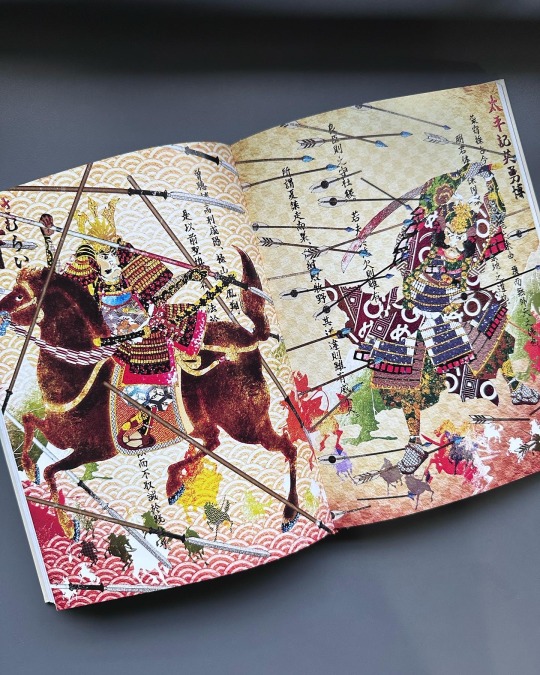



JAPAN IN 100 WORDS
The Encyclopaedia of Japan, from Anime to Zen. Take a tour of Japanese Culture in 100 words, from art, cuisine, festival, philosophy to pop culture with this illustrated dictionary.The artistic illustrations by Ayano Otani on every page give you an idea the topics which makes it a pleasant journey in understanding everything you want to know about Japan.To me, it’s a good foundation that let you know about Japan as a whole, both good and bad, before you read other books that cover more in depth details of various topics.
#japan in 100 words#japan#ayano otani#japanese art#japanese illustration#japanese culture#japanese tradition#japanese food#japanese philosophy#japanese pop culture#japanese festival#tuttle publishing#book review#book recommendations#japanese book
28 notes
·
View notes
Photo

In the Playstation RPG “Breath of Fire 3″, the characters encounter and can gain stats and skills from a character named D’lonzo. Described in game as a female cat burglar, she teaches the character under tutelage abilites like how to hog all the experience points for themself, intimidate their opponents with a nasty glare, and of course how to Steal from enemies. With all that, it’s not really a surprise the character’s Japanese name is actually Doronzo (ドロンゾ)! The game, especially in its original Japanese, is just full of thematic silly names and pop culture references. In fact, a slightly name changed Doronjo is probably one of the more subtle ones...


For an example, Stallion is a boss the players fight and his color scheme and attack animations are blatantly a reference to tokusatsu icon Ultraman! Even his strongest move (localized as “Utmost Attack” is named “Upecium“ ( ウペシウム) in the original Japanese version-- a winking reference to the hero’s powerful Specium Ray. This sort of lampooning comes at a price though... when the game was ported to the PSP, all references to Ultraman were scrubbed away as both Stallion’s color scheme was heavily altered and the Upecium attack was renamed!

Another reference that got changed was because it just wouldn’t make sense to the audience at the time: the Artemis’ Cap is a piece of headwear that makes their attacks to hit more accurate. While being named after the Greek goddess of the hunt is certainly fitting, the Japanese name is Jigen Hat ( ジゲンハット)-- named after the expert marksman from Lupin III. It’s always interesting to see what things the production of something were into when they were working on their project!
#yatterman#doronjo#reference#japanese pop culture#breath of fire 3#breath of fire iii#bof3#breath of fire#ultraman#lupin iii#lupin the 3rd#lupin the third#specium ray#d'lonzo#translation
41 notes
·
View notes
Text
I know of Akira Toriyama's work, but I don't know Akira Toriyama the person. I have no reason to otherwise believe though that Akira Toriyama was a great person.
Apologies for the off-tone post. But I've just been seeing so many, so many praises of Akira Toriyama on the Internet this past two days. I just need to screw my head back on straight again.
No disrespect to Akira Toriyama. And also no disrespect to all those heaping heaps and heaps of very deserving eulogic praise on Akira Toriyama.


Artwork by Akira Toriyama and ig:octi_lfc
The Ringer: Dragonball creater Akira Toriyama had an unrivaled impact on anime
---
the many faces of Akira Toriyama:

artwork-collage from some Japanese magazine in the '80s or something...
4 notes
·
View notes
Text

Not all the videos on my YouTube channel and the other contents I upload online are readily available to everyone. I had to keep some of them out of public eye for obvious reasons. Most of these otome/joseimuke games that these contents are from are no longer officially available, so I'm trying to archive them (I'd also like to avoid directly addressing the titles here). There're also J-pop contents, mostly from the artists and groups of LDH JAPAN. Join my Discord server from the link below to get access to them.
#discord#discord server#otome game#otome games#joseimuke game#joseimuke games#joshimuke game#joshige#otoge#乙女ゲーム#j-pop#jpop#japanese pop#japanese pop culture#ldh japan
6 notes
·
View notes
Text
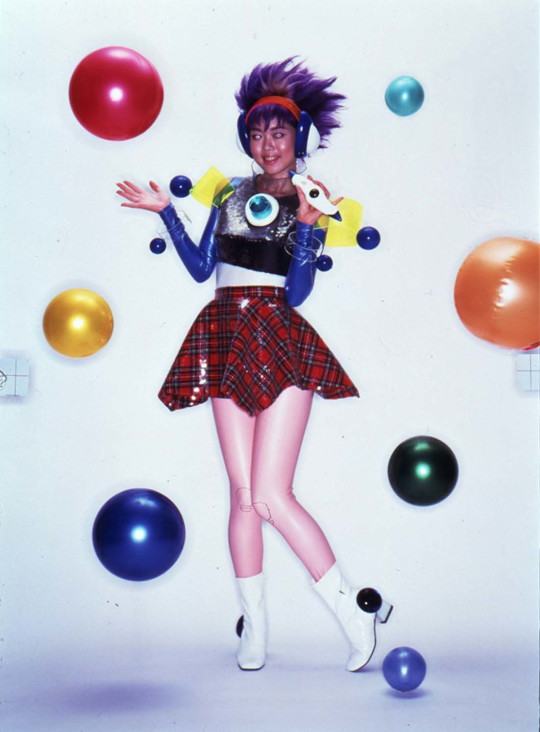
If I ever cosplayed, I'd go as Mariko Mori's "Birth of a Star" (1995)
I only cosplay fine art... that references cosplay
.... but the DOLL version. A woman dressed as a doll, issued in doll form recreated on a woman. Keeping it meta meta meta fictional.
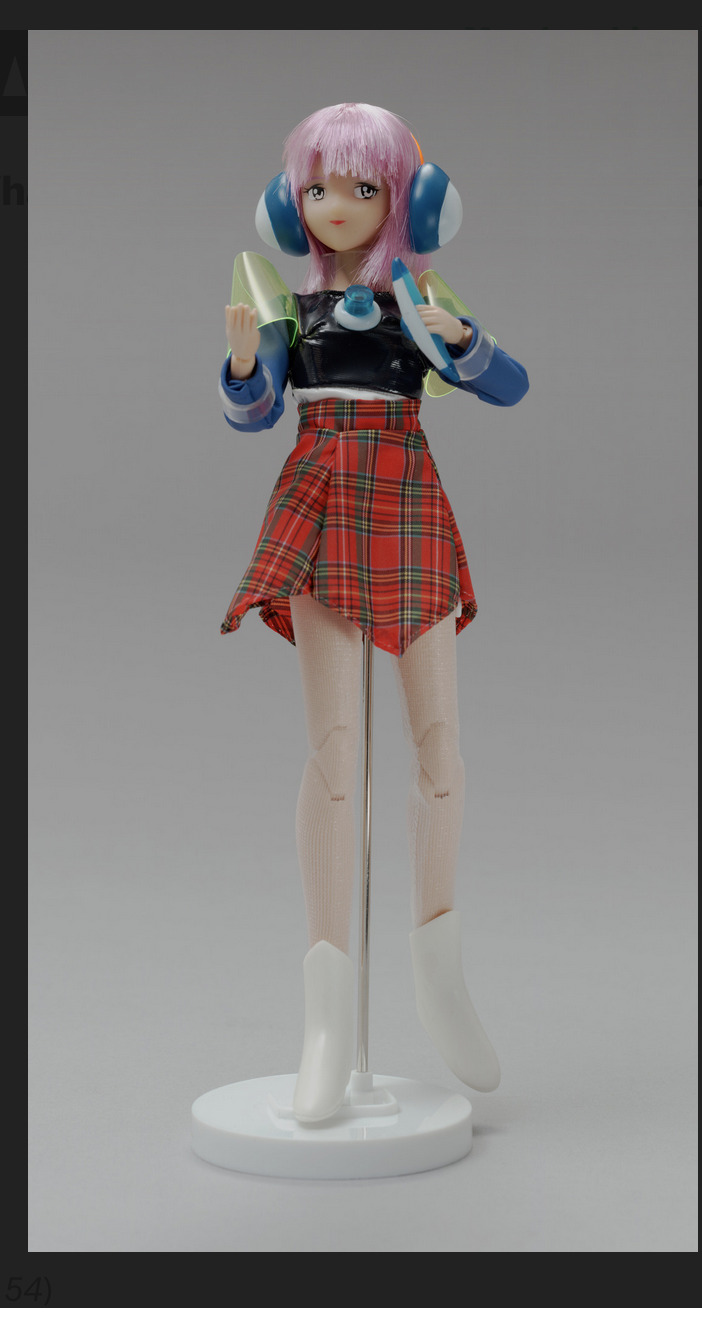
#1995#japanese art#mariko mori#birth of a star#japanese pop culture#moma#photography#female artist#fine art#art history#superflat#postmodern art#contemporary art#anime#pop star#jpop star#jpop fashion#1990s#retrofuture
18 notes
·
View notes
Text
Hey you! You weeb! I am writing my thesis and would like to see some international anime, manga and japanese pop-culture fans participating in this neat little survey I did.
https://link.webropolsurveys.com/S/E3A949F0E438A9B1
I am a 3rd-year student in Haaga-Helia University of Applied Sciences. I study Tourism and Event Management in the international TEMPO class. The subject of my thesis is seichijunrei (聖地巡礼), also known as “anime pilgramige”. The aim of my thesis is to understand how anime and other Japanese fiction media entertainment effect a tourist in their decisions when choosing international destinations and visiting points of interest. I wish that anime and Japanese pop-culture fans, aswell as those who have participated in seichijunrei partake in this survey.
All answers are handled anonymously with trust and good scientific conduct. Participants cannot be identified from their answers. Answering this survey takes around 15 minutes, and the survey can be accessed untill 2nd of October 23:59 or untill ~50 answers have been recorded. Participation to this survey is voluntary, and the answers provided will only be used for this thesis.
#anime and manga#japanese pop culture#weeaboo#thesis survey#hospitality industry#student thesis#i know tumblr likes science#help me make science#seichi junrei#anime pilgramige
2 notes
·
View notes
Text



#pharrel williams#pharrell#bape#bapesta#skateboarding#nigo#2000s aesthetic#2000s core#2000s style#2000s fashion#awge#playboi carti#old kanye#kanye west#lil uzi vert#2000s#hip hop#music#louis vuitton#ice cream#bbcicecream#y2k style#y2k nostalgia#y2kcore#pop culture#japanese pop culture#streetwear#streetwear archive#y2k#y2k fashion
18 notes
·
View notes
Text
Takeshita Street 🎸🎧 Harajuku



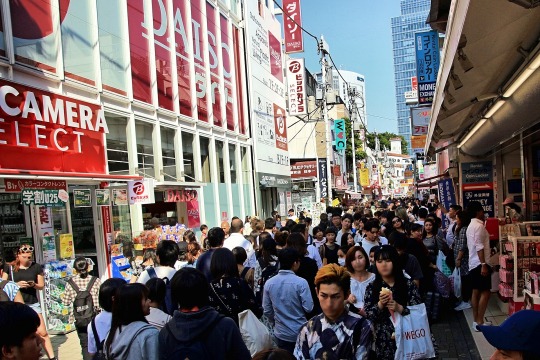

11 notes
·
View notes
Video
youtube
Song goes so fucking hard oh my gooooooooooo
#smap#japanese music#japanese pop culture#shingo katori#takuya kimura#masahiro nakai#jpop#jpop boyband#boy bands#90s japan
12 notes
·
View notes
Text
Cool Japan Has No Community

Years before I started blogging about manga, I was somewhat involved in the promotion of Japanese culture in New York City. At the time, anime and manga were going through a boom period. Crunchyroll was still a pirate anime site. I then overheard something from a colleague about an initiative called Cool Japan. It was supposed to be this big move of “soft power,” given how creative Japan is when it comes to anime and manga. There’s been a company called the Cool Japan Fund that was formed in 2013 to take advantage of Japanese pop culture gaining more attention outside of its home country.
Yet after hearing about Cool Japan a decade plus later, it hasn’t done anything substantial to get the world’s attention. Quite frankly, I don’t think they give a damn about building a community of fans.
The big news is that Cool Japan might finally come to an end. The Cool Japan Fund announced that they owe 30.9 billion yen (about $220+ million) as of 2021. They want to make a profit by 2025 or risk consolidation. The company has blamed COVID to a certain degree for the lack of success and they’re hoping to finalize a plan to get things back on track.
Sigh. I don’t know anymore. I guess I sound like Gackt in that there’s been really no serious promotion of anything Japanese culture-related outside of Japan. Like, what is Cool Japan to begin with? And even if there was promotion, there’s an insane amount of control behind what Japanese media companies want to enforce.
The best example I can give is Japanese music. Music videos featuring various artists have an awful habit of being region-locked. Sometimes, you might not get the full MV. Compare this to Korean pop culture, where everything about it is promoted by the Korean government and they’re the ones saying, “Hey, feel free to share this with everyone you know!” with no restrictions. When you have Japanese video game companies come up with silly streaming restriction guidelines (Hi, Atlus!) and dismantling relationships with fans who want to promote their games (Hi, Nintendo!), how can you say Japan is cool?
I remember watching a 2019 Maximillian Dood video about why Japanese game companies haven’t implemented rollback netcode in their fighting games for the longest time. He pointed to a Wikipedia article entitled “Not invented here.” The article states that it’s a practice where institutions refuse to implement products/research/ideas from other cultures/societies that aren’t like them. This is mostly due to a variety of reasons, from a lack of understanding of outsiders to a tribalistic belief that the institution knows how to do things best. I think this is Japan in a nutshell as I think they want to take credit for promoting Japanese pop culture over Westerners who have a better sense of doing so.
Recently, something happened in the overseas riichi mahjong scene that drew a lot of attention. It involved the sudden region-lock of a Abema TV livestream featuring a popular professional mahjong league called M-League. Since its inception, M-League has garnered many fans from all over the world with some of the coolest pro players and moments the riichi mahjong world has ever seen. Abema TV live-streams M-League whenever games are on. Then one day on October 13, 2022, there was an announcement saying “This video isn’t available in your area.” Fans took to Twitter to complain about the region-lock. What was revealed was that there are copyright issues and the staff are working on them. However, there’s no timetable for when the live streams will be readily available for fans across the world. The only consolation is that VODs streamed for the day will be available for 24 hours after they air live. (Update: As of 12/12/2022, the region lock for M-League is gone and overseas fans can watch games as they happen live).
To quote this post about the whole situation, it’s an overseas struggle. A long time ago, a Japanese colleague of mine who has done consulting work with Japanese companies that wanted to make a mark in the U.S. told me something that still rings a decade later. She told me that Japanese businesspeople who come here to do things will just come in, do their job, and then leave when everything’s over. They don’t necessarily bother to care about whatever they’re promoting as long as the job’s done. I know this too well as many mangaka don’t really think too much about overseas reception because they’re too busy creating for the Japanese audience.
I will gladly tell people that overseas people have promoted Japanese culture far better than Japan has ever done. They have a much better understanding of why Western folks love Japan. There’s been many grassroots groups over in my part of the world that have done a lot. Sure, some of it may involve piracy, but there’s always reminders to support the official works. I mean, it took a group of American-based fansubbers, which would become Crunchyroll, to convince TV Tokyo that the international audience was worth something to invest in and that they were willing to pay to watch streams if they were accessible enough.
However, I strongly feel that the things that Cool Japan wants to promote to the world are very different from what fans like about Japan - which are anime, manga, and video games. Basically, all things nerdy. Otaku fandom may not be as stigmatized as once it was, but it’s still not something to be proud of over in Japan.
And even if there was a focus on promoting anime and manga, it’s all a joke. What Japan wants to do is generate a collective mindset across the world like their culture, not a community of like-minded people with different strengths that make it much stronger. Collectivism and community are two different things. Community provides a genuine sense of purpose while collectivism’s sense of purpose is that you should be a cog in some grand machine that’s “worth your while.”
The one thing that I (and fans may agree with me on this) can say is that trying to be cool leads to alienation. We’re seeing this time and time again from Japanese organizations that want to leverage its cultural power. If only Japan learned from their own creations - the many notable anime/manga characters that know when being cool helps and when it doesn’t.
9 notes
·
View notes
Photo


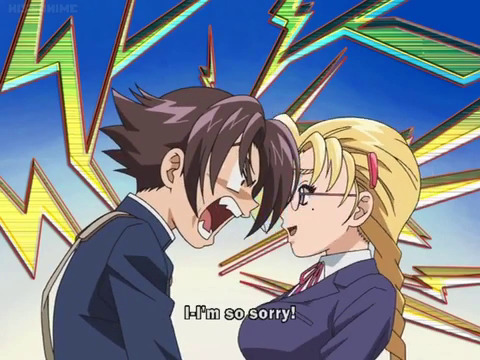
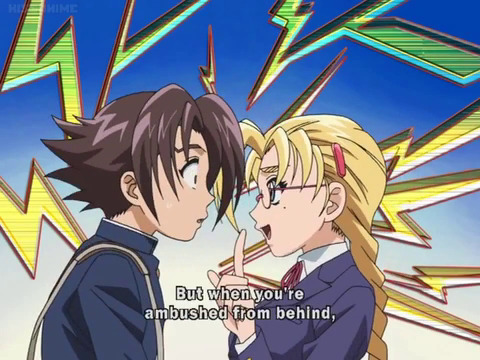
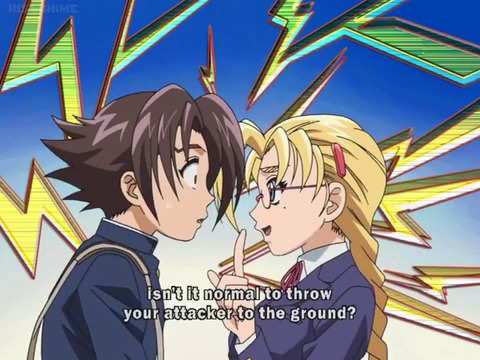


Nothing like a not-so-subtle nod to the ultimate killer, Golgo 13, to make me laugh. Lol!
27 notes
·
View notes